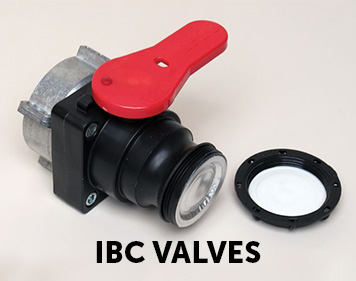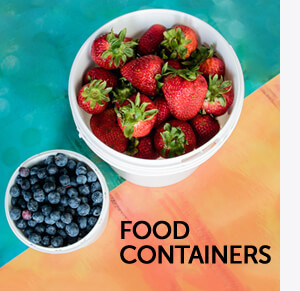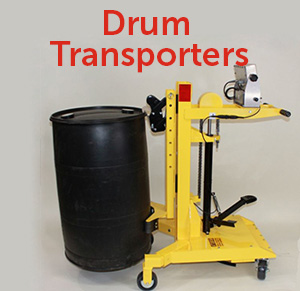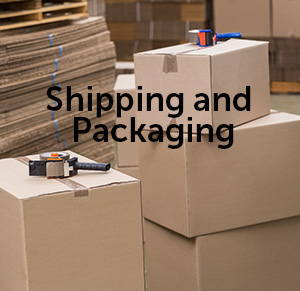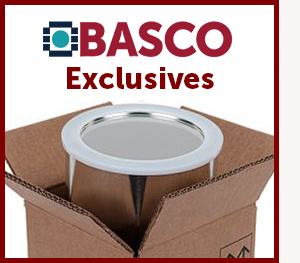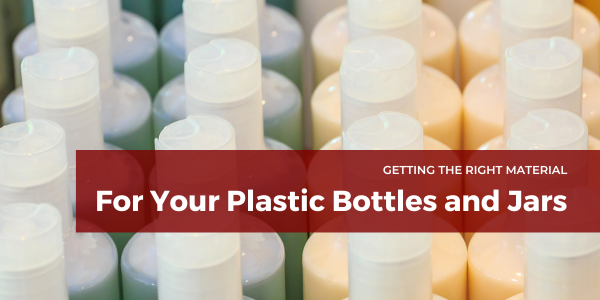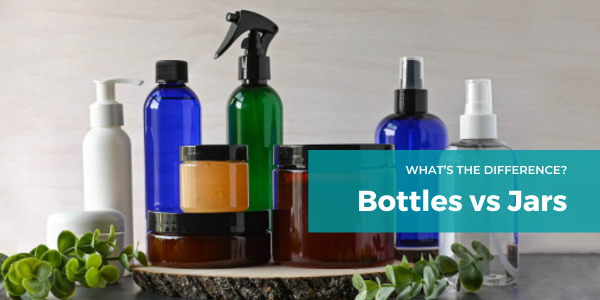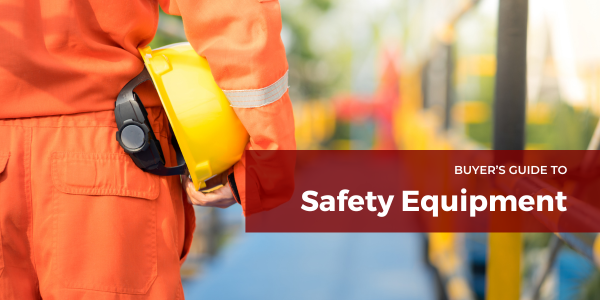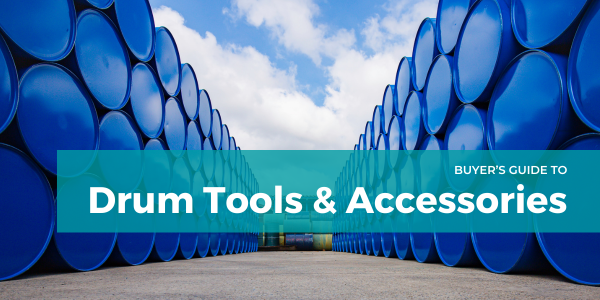Types of Plastic Used in Packaging Deciphered.
Are you looking to understand types of plastic and their uses and types of plastics and their properties? Take a seat and get a quick Plastics 101 course. Here is everything to know about plastics.
There are many different types of plastic used in packaging, like our variety of FDA compliant plastic bottles and jars and pails that are quality checked before shipments. Or our food grade plastic buckets. What makes plastic containers food grade? What is a food grade plastic bucket? A food grade plastic bucket or container is made of food safe plastic. A key one is polyethylene. The question of whether to use polyethylene or polypropylene plastic comes up quite a bit, but here is what makes both polyethylene plastic and polypropylene plastic containers such premier choices. How can you tell if a bucket is food grade? Aside from looking for polyethylene material, you can tell if a bucket is food grade by looking at the bottom of your bucket and understanding its plastic coding. Find out more about coding below. On the bottom of the bucket, there should be a recycling symbol, which also contains a recycling number between 1 and 7. This number will be stamped between a triangle of arrows. Generally speaking, the numbers that denote food grade standards are 1, 2, 4, and 5.
Are food grade buckets BPA free? Food storage buckets are inherently BPA free. Food storage buckets are made with #2 HDPE plastic and BPA is found only in #7 plastic products.
How Plastic Bottles & Jars Are Made
Plastic bottles and jars are typically made by either one of these two major processes: Extrusion Blow Molding or Injection Blow Molding.
- Extrusion blow molding is the simplest type of blow molding. A hot tube of plastic material, called a parison, is dropped from an extruder and captured in a water cooled mold. Once the molds are closed, air is injected through the top or the neck of the container; just as if one were blowing up a balloon. When the hot plastic material is blown up and touches the walls of the mold the material "freezes" and the container now maintains its rigid shape. For colored bottles, colorants are often fed into the extruder at a controlled rate and mixed with the resin as they are being melted. If barrier and adhesive layers are required, they are fed separately and combined in a co-extrusion head.
When a bottle is produced using extrusion blow molding, excess material is created when the mold closes around the parison. This 'flash’ must be removed to complete a finished bottle or jar. Flash at the bottom (called the tail), the top (the moil), and for handled ware - a “handle slug” needs to be trimmed. Typically, the flash is removed upon mold release (trimmed in mold). For bottle with handles (handleware), offset neck and special circumstances, the flash is extracted via a secondary operation downstream. In addition to removing the flash, secondary (downstream) operations include flame treatment, leak detection, and post mold decorating. Flame treatment is sometime used prior to bottle decorating to improve ink adhesion. Leak detection, on the other hand, is always required to ensure the integrity of the bottle before it leaves the production line. If a bottle fails the leak detection test, it is rejected and sent back for regrind.
- Injection blow molding is the process of inflating a hot, hollow, thermoplastic preform or parison inside a closed mold, so its shape conforms to that of the mold cavity. A wide variety of blow molded hollow parts, including plastic bottles, can be produced from many different plastics using this process.
This method is used to manufacture higher volume quantities of plastic products ranging in size from large components to small components requiring micro-precision accuracy. There are many types of manufacturing methods categorized under injection molding, such as thermoplastic injection molding, over molding, insert molding, cold runner molding and hot runner molding.
Thermoplastic injection molding uses thermoplastic polymer, meaning it changes to a liquid state when heated. Unlike thermoset plastics that cool into permanent solid, thermoplastics can be remitted into a liquid after cooling into a solid. Overmolding, or two shot molding, is a process that covers an injection mold over another substance, such as metal, to improve the performance or durability of a product. A rubber-like compound, called thermoplastic elastomer (TPE), is a commonly used overmold material. An example of a TPE overmold application is the handle grips on a toothbrush. Overmolds can also be used to seal products with parts made from several injection molds. Like overmolding, insert molding is an injection moldingprocess that combines two or more components into a single finished product. Insert injection molding inserts a component into the injection mold cavity and plastic material is filled around the insert. Inserts can add strength to a product and eliminate the need for additional parts to reduce the product weight. Cold runner molds use a sprue to fill the runners that inject plastic resin into the mold cavity. In 2 plate molds, the runner system and parts are attached, and an ejection system may be used to separate the pair from the mold.The cold runner can reduce waste by recycling and regrinding the material, but this can also increase the total cycle time. Cold runner systems can be used for a wide variety of polymers and can allow for easy color changes. Hot runner molds use a manifold to heat melted plastic resin and then send the material through a gate to fill the mold cavity. The two main types of hot runner molds are externally heated and internally heated. The externally heated molds can be used with polymer that is less sensitive to thermal variations while internally heated hot runner molds allow for better control of material flow. Because hot runner molding does not require the use of runners, potential waste material is reduced and the recycling and regrind and process of virgin plastic does not impact the total run cycle time.
Polyethylene Plastic Properties and Uses
1. First off, what is polyethylene?
- Polyethylene is the most common plastic used in the world. It accounts for roughly 35% of the plastic on the market today. Polyethylene is a popular choice for manufacturing packaging because it absorbs almost no water. So it’s an ideal polymer for creating vapor-tight packaging.
2. What’s the difference between HDPE, MDPE, LDPE, and LLDPE?
- H, M, and L stand for high, medium, and low, respectively.
- DPE stands for “Density Polyethylene”
- High-Density Polyethylene (HDPE) – Known for its high strength-to-density ratio, HDPE is the thickest and strongest of the bunch. It is especially mold, rotting, mildew, impact, weather, and chemical resistant.
- Medium-Density Polyethylene (MDPE) – The least common of the three, MDPE is known to have good drop and shock resistance and it’s less likely to crack under stress compared to HDPE.
- Low-Density Polyethylene (LDPE) – More flexible and moldable than HDPE and MDPE, LDPE is used for manufacturing products that require softness and pliability.
- Linear Low-Density Polyethylene (LLDPE) – Similar to LDPE, but LLDPE boasts higher tensile strength and puncture resistance. However, it is more difficult to process and produce.*Both LDPE and LLDPE possess high heat resistance plus good moisture, but poor oxygen barrier.
3. What is HDPE used for? What are some HDPE plastic properties and uses?
- Typically, things like pails, drums, bottles, or other sturdy containers are made of HDPE. Strong scratch and dent resistance make HDPE an excellent polymer for manufacturing durable containers.
4. What is MDPE used for?
- Medium-density polyethylene is normally used for making things like drum cover fittings, packaging films, and closures. If a product does not need to be especially strong, but it also doesn’t need to be flexible, MDPE is the way to go.
5. What is LDPE used for? Can LDPE plastic be recycled?
- LDPE is commonly used to make things like plastic bags, packaging foam, snap-on lids, beverage cartons, and playground slides. Given that LDPE is the most flexible option, it works well for products that require a certain amount of maneuverability. And yes, LDPE plastic is recyclable.
6. What is LLDPE used for?
- LLDPE is very similar to LDPE, but it is more durable. Due to its high puncture resistance, linear low-density polyethylene (LLDPE) is commonly used in packaging films and shrink wraps.
Polypropylene Plastic Properties and Uses
7. What is polypropylene?
- Polypropylene (PP) is It is a harder, rigid plastic that offers chemical resistance, toughness, fatigue resistance, and insulation. It belongs to the polyolefin family of polymers and one of the top three most used as both a plastic and fiber application. It also has the lowest density among commodity plastics. Polypropylene plastic also has an excellent moisture barrier.
8. What types of polypropylene plastic are there?
- Propylene Homopolymer is the most used, general-purpose grade of polypropylene with good impact resistance. It is used for packaging, textiles, healthcare, pipes, automotive and electrical applications.
- Polypropylene copolymer family is further divided into random copolymers that are flexible and clear for products that need transparency and an excellent appearance and block copolymers that is tougher for applications requiring high strength such as industrial usages.
- Polypropylene, Impact Copolymer – Propylene Homopolymer is useful in parts which require good impact resistance and are mainly used in packaging, houseware, film, and pipe applications, as well as in the automotive and electrical segments.
9. Why is polypropylene used for food storage?
- Polypropylene is used for food storage because it is tough and can stand up to the task of keep delicate food protected. It will deform and shape without breaking, so materials contained inside of polypropylene containers have a lower risk of spilling out when the container is damaged.
- It has an excellent moisture barrier.
- Polypropylene is also an especially chemical-resistant plastic, making it an excellent choice for containing liquids such as cleaning products or first-aid products.
- Polypropylene plastic lastly provides contact clarity, which provides satisfactory ability to observe the food contents inside such a container when the food touches its wall.
10. What are the other most popular plastics?

- PET/Polyethylene Terephthalate
Lightweight and crystal clear, PET plastic is an especially good choice for containing and transporting liquids and beverages because of its ability to handle cold, warm, and hot fills. PET has exceptional moisture and gas vapor resistance, so it can provide a watertight barrier when combined with the right lid. Given that it is transparent and virtually shatter-proof, PET is a perfect alternative for glass containers with a glass-like look to it.
How is PET made? Its process is actually a little different than other types of plastic bottles (that use Extrusion Blow Molding, Injection Blow Molding, etc.). Known for its quality and environmental friendliness, PET plastic bottles and jars are made using a unique process called Stretch Blow Molding, or SBM.
There are two SBM manufacturing techniques: Single Stage and Two-Stage Process. Both are divided into three similar and distinct steps: Preform, Conditioning, and Blow & Stretch. What’s really interesting is that the preform, a test tube shape plastic preform, can be stored in warehouse for later production. Since these preforms already have the neck finish portion shaped, the conditioning and blow & stretch stage focuses on blowing the preform into its final shape that one sees on the market.

- PS/Polystyrene
Polystyrene can be used in a variety of applications and industries. In food packaging, polystyrene is preferred due to its ability to insulate and maintain freshness while being relatively low-cost. It is also popular in the medical field because of its clarity and because it can be sterilized easily. Due to its strong impact resistance and rigidity, polystyrene is also often used in packaging for things like eggs or CD cases.
11. What are the types of plastic numbers?
- HDPE is 2 on the triangle code, LDPE is number 4, and polypropylene is number 5. The most common plastics for food storage are made from number 1, PET or PETE (polyethylene terephthalate) which is clear, tough, and has moisture barriers, or number 7 combo plastic. PVC (polyvinyl chloride) is number 3 and it weathers well. Therefore, it is used for surrounding electrical cables, home window frames, floor tiles, and siding. This plastic can be used for both food and non-food purposes. PS (polystyrene) is a number 6 with a rigid plastic. It is therefore commonly used for cups, plates, cutlery, egg cartons, meat trays, and compact disc jackets.



